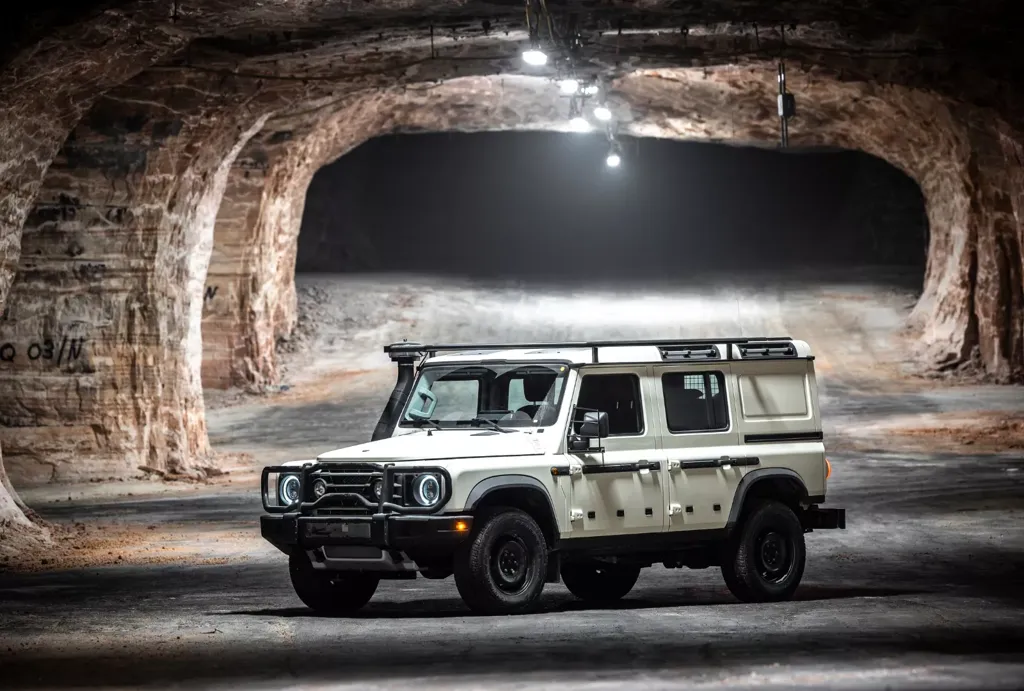Ineos Automotive has faced an uphill battle on its way to sell SUVs in America. "I think we're still very much in our infancy," Lynn Calder, CEO of the company, told Newsweek. "We've been selling in the U.S. for a year and a half. We've launched in 50 countries now. We've been producing for two-and-a-half years. So still a very young company, but I think one that's kind of done a lot in a short period of time."
The automaker sold around 8,000 vehicles in the U.S. last year and aims to sell more than that this year. "We are still forecasting to be up year over year in retail sales despite tariffs, consumer sentiment and diminishing seasonally adjusted sales rate," a company spokesperson told Newsweek.
Lucid sold 2,100 more vehicles during the same period. In contrast, Fiat sold about 1,500 total under the same parameters.
Ineos's business journey hasn't been smooth sailing. During a well-documented court battle, the company had to find its bearings. "[It] was really from a standing start, from an idea to build this car, and then, you know, through design, engineering, finding somewhere to manufacture it, building the supply chain, setting up the sales and distribution networks, building a team. I'd say where we're at today is, you know, in a really good place for only seven-and-a-half years [of operations]," Calder said.
The British automaker, like Rivian and Lucid, has faced obstacles in its efforts to get off the ground, helped in no part by the COVID-19 pandemic. "I think [it's been] many and varied [obstacles], to be quite honest, one long obstacle. There's a reason why most people don't start new car companies," the CEO said.
She continued: "The barriers to entry, the obstacles, are really quite extreme... In the early days, it was really the supply chain. [Grenadier] is a complex vehicle. It's got a couple of thousand different components in it that come from 200 different suppliers across 400 different manufacturing sites into our one manufacturing site in France. We were doing that just on the back end of COVID, at a time when the supply chain was a challenge for players who've been around for 100 years... The entirety of the organization was focused on supply chain for six months until we fixed it."
Today, the challenges Ineos faces are different but just as challenging. "Fast forward to today, and our challenge is very different. The twofold part of it is we're not just building a car and a company, we're building a brand. And, that means that people have got to know who we are. We're still kind of working really hard to have people recognize the Grenadier when it's driving down the street instead of, 'Oh my goodness. What's that?' So I think building a brand is a current challenge, getting our name and our car out there as an unknown," Calder explained.
Ongoing trade negotiations between the U.K., the European Union and the U.S. have continued to impact Ineos. "We've kind of walked straight into the eye of the storm in terms of a trade war, as well being a French manufactured vehicle whose biggest market, by a really long way, is the U.S.," she said.
Until an agreement is signed between the U.S. and the European Union, the tariff on Ineos products will continue to be 27.5 percent for the Grenadier Station Wagon and 50 percent for the Quartermaster pickup truck. Once the current agreement between the governments is formally executed, the rate will fall to 15 percent on Station Wagon and 25 percent on Quartermaster.
While working to overcome those obstacles, there were initial criticisms about the vehicle coming in from reviewers and owners. Some felt its handling was off and others criticized its on-road manners.
"We're absolutely listening... It would be really silly of us to not listen to customers," Calder said. "We've also got to kind of stick to what this car is and why people love it... It's really normal for four-by-four solid beam axle system steering... If you give it 10 minutes, it feels a bit different. If you give it 20, you're used to it and you're not really thinking about it anymore... But that doesn't mean we're not listening. And, what you'll see over time is an optimization with the steering.
"We're constantly looking at ways to optimize it, but we won't disappear from or detract from the original vision for the car. The steering isn't a mistake; the steering is very purpose-built for off-roading, and we think it's a very comfortable on-road drive as well."
Jeep and Ford offer the Grenadier's only true rivals, but even those are more complex machines. Calder said explaining the values that developed the Grenadier, "[The] car that has a unique place in the market. I think there isn't really anything else like it on the road, because most people who were producing off-road cars have moved into much more of a kind of soft-roading SUV space because there's a lot of demand there.
"I completely understand that," she continued, "but it left a real gap for us with a car that... puts a lot of adventure back into driving in a world where everything's becoming quite tech heavy. It feels a bit sometimes when you get into today's cars... it's a bit like driving an appliance; our car is the opposite of that. It brings absolute and utter joy when you get behind the wheel and get to do some really fun things in it."
Expect to see Grenadier's marketing efforts moving forward to reflect that. "It's about telling that story. It's about the possibility of adventure, putting the drive back into driving, and telling that story in a fun and engaging way."
